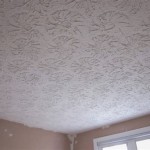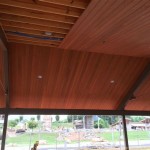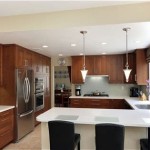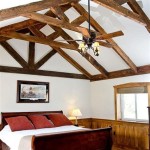What Is a Vaulted Ceiling?
A vaulted ceiling is a type of ceiling that is shaped like an arch or a dome. It can be made of various materials, such as wood, stone, or concrete, and is often used in churches, cathedrals, and other large buildings.
Vaulted ceilings have been used for centuries, and their popularity has waxed and waned over time. In the Middle Ages, they were a common feature of Gothic architecture, and their use continued in the Renaissance and Baroque periods. They fell out of favor in the 19th century but have seen a resurgence in popularity in recent years.
There are many different types of vaulted ceilings, each with its own unique shape and design. Some of the most common types include:
- Barrel vaults: These vaults are shaped like a half-cylinder and are used to cover large, open spaces.
- Groin vaults: These vaults are formed by the intersection of two barrel vaults at right angles and are often used in churches and cathedrals.
- Rib vaults: These vaults are similar to groin vaults but have ribs that reinforce the intersections of the vaults.
- Dome vaults: These vaults are shaped like a dome and are often used to cover large, circular spaces.
Vaulted ceilings can have a dramatic impact on the look and feel of a space. They can make a room feel taller and more spacious, and they can add a sense of grandeur and elegance. Vaulted ceilings can also be used to improve the acoustics of a space, making them ideal for use in music halls and other performance spaces.
If you are considering installing a vaulted ceiling in your home, there are a few things you should keep in mind. First, vaulted ceilings can be more expensive to install than flat ceilings. Second, they can require more maintenance, as they are more difficult to clean and repair. However, if you are willing to invest the time and money, a vaulted ceiling can be a beautiful and dramatic addition to your home.
Advantages of Vaulted Ceilings:
- Aesthetic appeal: Vaulted ceilings can add a sense of grandeur and elegance to any space.
- Spaciousness: Vaulted ceilings can make a room feel taller and more spacious.
- Improved acoustics: Vaulted ceilings can help to improve the acoustics of a space, making them ideal for use in music halls and other performance spaces.
- Natural light: Vaulted ceilings can be used to bring natural light into a space.
Disadvantages of Vaulted Ceilings:
- Cost: Vaulted ceilings can be more expensive to install than flat ceilings.
- Maintenance: Vaulted ceilings can require more maintenance, as they are more difficult to clean and repair.
- Heating and cooling: Vaulted ceilings can be more difficult to heat and cool than flat ceilings.
- Headroom: Vaulted ceilings can reduce the amount of headroom in a space.
Overall, vaulted ceilings can be a beautiful and dramatic addition to any home. However, it is important to weigh the advantages and disadvantages carefully before making a decision. If you are considering installing a vaulted ceiling, be sure to consult with a qualified contractor to discuss the costs, benefits, and challenges involved.

Vaulted Ceiling Types Advantages Disadvantages

Vaulted Ceilings 101 History Pros Cons And Inspirational Examples

Vaulted Ceilings 101 The Pros Cons And Details On Installation Bob Vila

What Is A Vaulted Ceiling Pros And Cons Of Ceilings

Pros And Cons Of Vaulted Ceilings Sina Architectural Design

Vaulted Ceilings 101 The Pros Cons And Details On Installation Bob Vila

Vaulted Ceiling Ideas For Updated Elegant Striking Drama Décor Aid

Cathedral Ceilings Vs Vaulted

Problem Ceilings That Could Definitely Wreck Your Room Laurel Home

Cathedral Vs Vaulted Ceiling Difference Pros Cons
Related Posts








